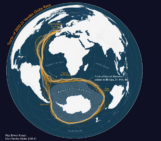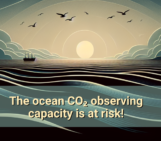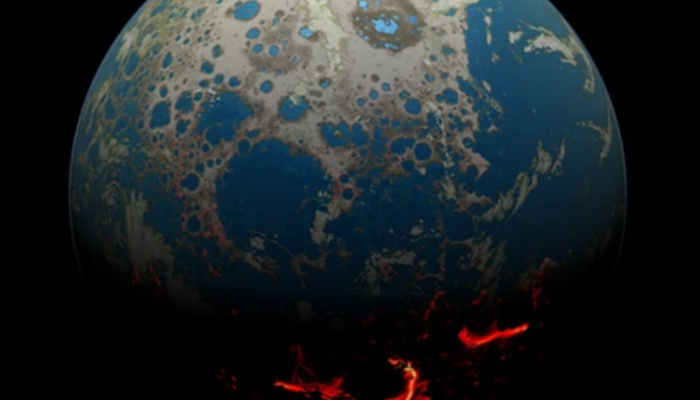
Compared to the formation and evolution of the Earth’s surface, the ancient oceans receive little attention in geological history. However, understanding the rise and fall of the oceans of the past—or “ghost oceans”—can reveal crucial information about the evolution of our planet, the cryosphere included. Can oceans play a historical role in climate change? If water bodies had not existed, would we have any ice on Earth?
This is a joint post, published together with the cryospheric sciences division blog and the ocean sciences division blog, given the interdisciplinarity of the topic.
One ocean, or many oceans?
Since a very young age, we have been taught in schools that there are 4 oceans, where they are on Earth, and maybe even how they differ. Although, it is arguably common knowledge, we often overlook the fact that oceans do not have a boundary and are inherently interconnected. The simple fact that we divide up the water on earth into four components is a mere convention, an oversimplification of the complexity of our planet.
Similarly, we often assume that these oceans each represent a stagnant giant water body. When most people think about the oceans, their experience of the oceans nowadays comes to mind, and one might easily forget the fact that the oceans were not always shaped like today just like our continents. The overlooked truth is that these vast water bodies are continuously shifting and changing. All ocean basins are connected and in constant exchange via the thermohaline circulation with a typical speed of 1 cm per second.
Planet Earth, or Planet Water?
After finding seashells on a mountain, the ancient Greek philosopher Xenophanes reasoned that the whole Earth must have been covered by sea at some point in history. Indeed, 4.4 billion years ago, the Earth was a planet covered entirely by water. It was within this aquatic environment that the first lifeforms evolved, from single cell organisms to the first plants. Ultimately, it was the existence of primordial ocean life that led to the formation of the atmosphere as we know it today. This oxygenation of the atmosphere eventually made life on land possible. Since these ancient times, our planet has undergone many changes over time with the rise and fall of land and sea.
With this background in mind, we now ask, how and why do oceans disappear on earth, and where do they go?
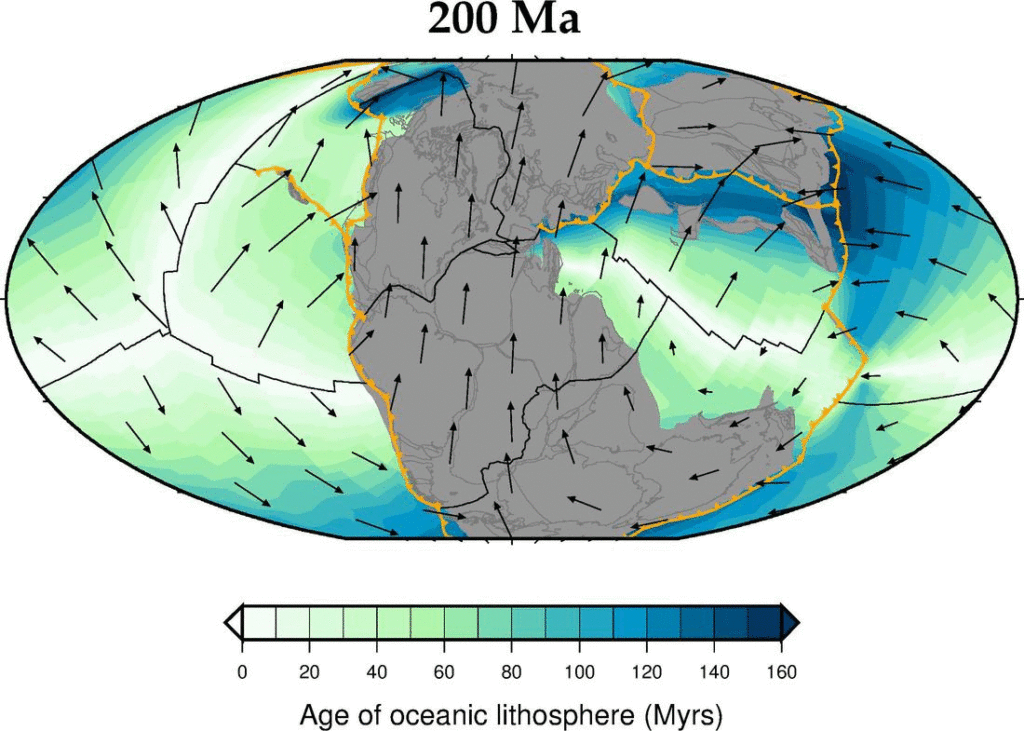
A plate tectonic reconstruction of the Earth’s oceans from 200 million Years ago (Ma). The grey regions are the continents, the green blue colours correspond to the age of the oceanic basins (dark is old crust and light is young crust), orange shows the location of subduction zones, the black arrows show the plate velocities, and the black lines are the plate boundaries. (Credit: Grace Shephard and colleagues)
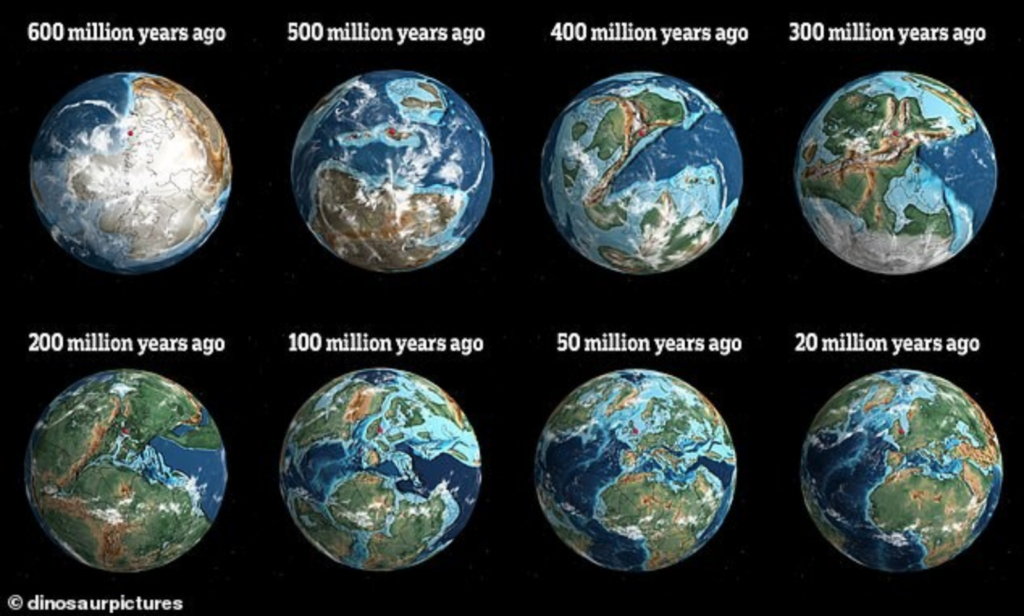
Earth over years. (Credit: Ian Webster – DinosaurPictures)
Between 3.3 and 3.2 billion years ago, the first continents of the Earth—known as “cratons”—rose from the vast primordial ocean. As the Earth’s lithosphere slowly developed tectonic plates, the movement of primordial continents created and displaced ancient ocean bodies. For example, the evolution of the Tethys Ocean, located between the ancient continents of Gondwana and Laurasia, was thought to be the origin of many major seas and lakes of Europe and Western Asia, including the Aral Sea, the Mediterranean Sea, and the Caspian Sea. The accumulation of seemingly minor changes of the movement of the oceans ultimately plays a major role in shaping the whole Earth System.
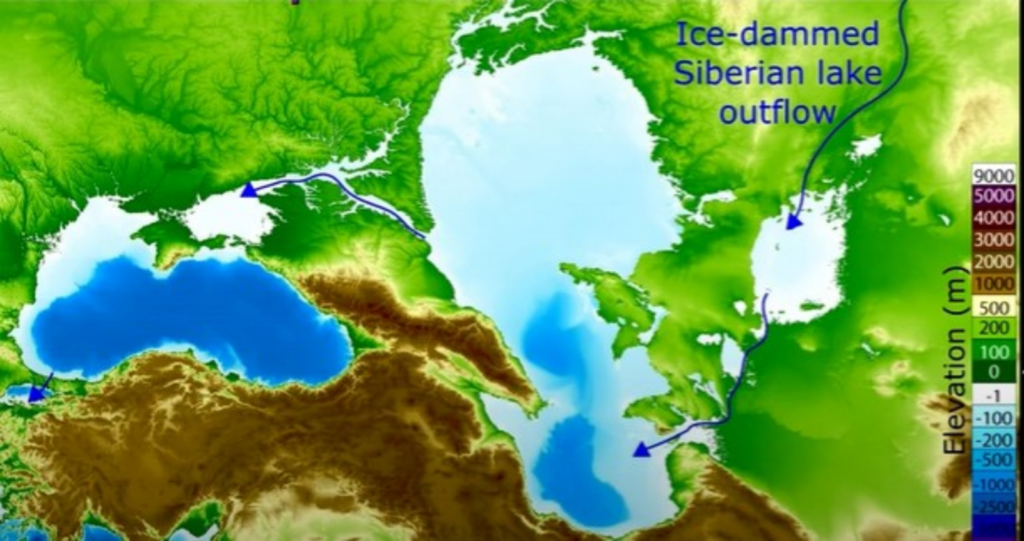
This conceptual image reveals three inner seas in Eurasia during the Ice Age. (Credit: a frame from a video entitled An ancient ocean in Ice Age Eurasia, by Gwillerm Kaldisti)
The role of Ice Ages in the creation of new water bodies
The movement and development of oceans are immensely affected by ice. It is known that Ice Ages have many consequences on Earth, such as the formation of individual water bodies (including their size and shape) as well as changing the sea level throughout history. We also know that sea level is not constant across the climatic ages, but fluctuates in relation to them. In general, the warmer the climate, the higher the sea level, resulting from the discharge of water from polar ice caps to the oceans. Likewise, during the ice ages, the global sea level decreased significantly due to the sequestration of water by the formation of ice sheets. Because ice sheets are extremely sensitive to fluctuations in climate, even small changes in temperatures may bring about large shifts in ice mass. It follows, then, that through the advent and twilight of the Ice Age, water from the ancient oceans were absorbed (into the growing ice sheets) and redistributed (to create new water bodies or grow existing ones). For example, the size of the Caspian Sea has grown and shrunk over threefold throughout history, and the modern Aral Sea did not exist until around the start of the Holocene Epoch (around 12,000 years ago).
Past oceans across the solar system
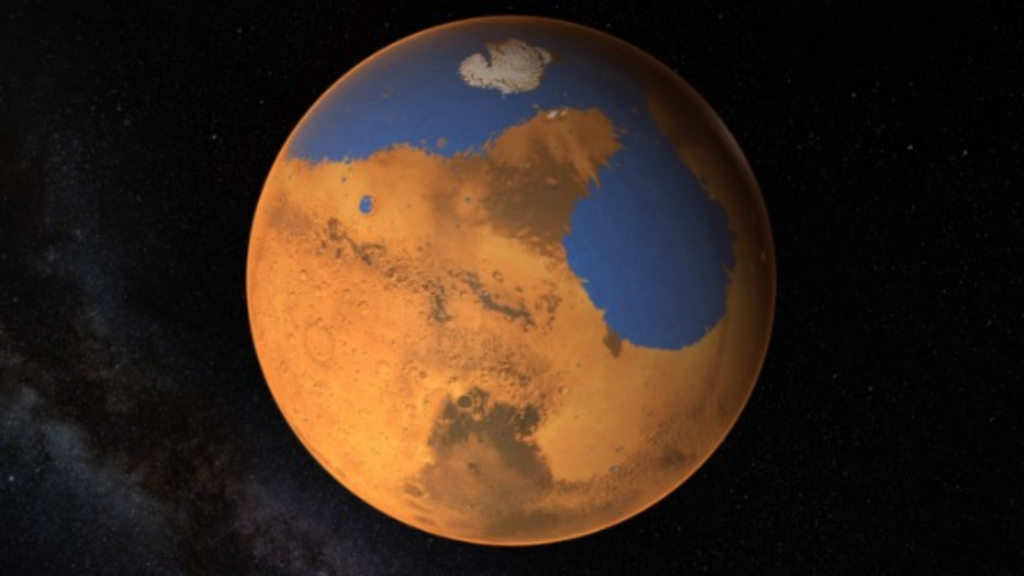
The Paleo-Ocean of Mars. (Credits: NASA/GSFC)
Earth is not the only planet that has lost so called Superoceans. 4.5 billion years ago, Mars used to host a water body bigger than the Arctic Ocean that covered 19% of the red planet’s surface. Nowadays, the planet’s frigid polar ice caps are the only remnants of its oceanic past. But the signs of its humid history are observed across the entire planet, as well as the signs of ancient glaciers. Remember, where there is an ocean there are often glaciers too, our views today are just a snapshot on a long geological timescale.
Edited by Giovanni Baccolo, TJ Young and Meriel J. Bittner
References & Further reading:
- Kusahara et al. (2021) “Modeling intensive ocean–cryosphere interactions in Lützow-Holm Bay, East Antarctica” Cryosphere 15:1697-1717.
- McPhee & Morison (2001) “Under-Ice Boundary Layer” Encyclopedia of Ocean Sciences 155-162
- Müller et al. (2016) “Ocean Basin Evolution and Global-Scale Plate Reorganization Events Since Pangea Breakup” Annual Review of Earth and Planetary Sciences 44:107-138
- Read more about ‘Atmosphere-Ocean-Cryosphere Interactions’
- Some basic information about the cryosphere and its interaction with the oceans; by APECS
- Institute for Marine and Antarctic Studies: Cryospere-Ocean Interaction

